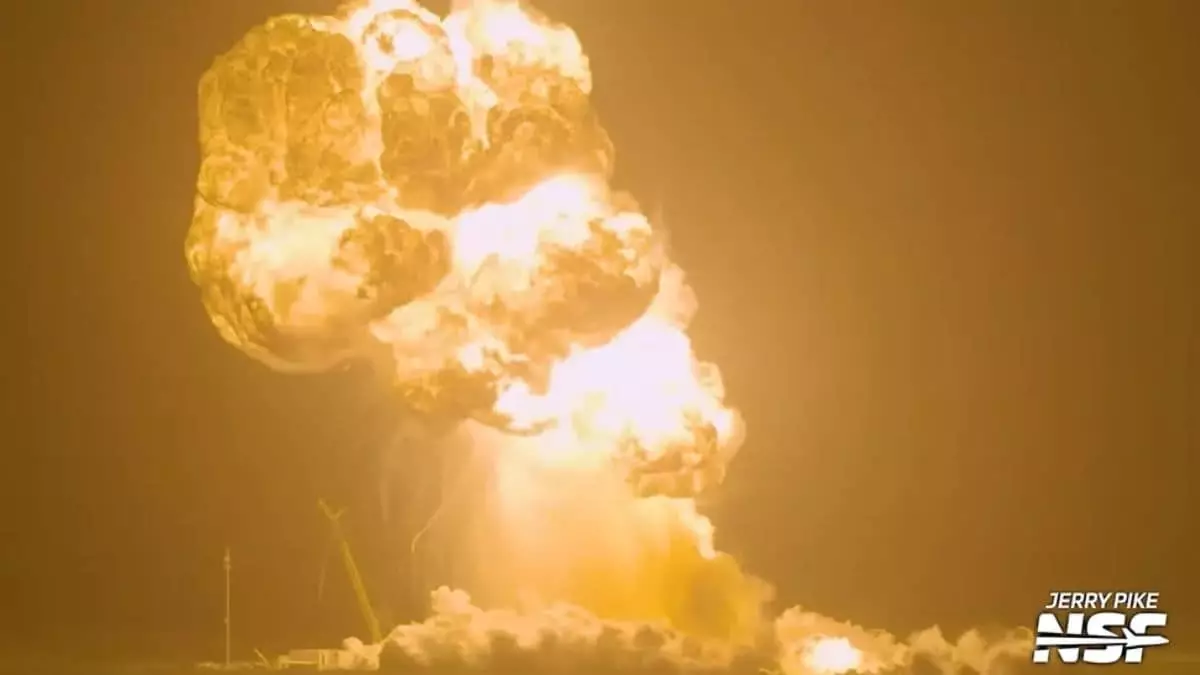In the depths of the night, a spectacle of chaotic wonder unfolded at SpaceX’s Starbase facility in Texas. The routine ground test of their Starship rocket went dramatically awry, culminating in a catastrophic explosion that resonated through the darkness. Occurring just after 11 PM, the fiery eruption not only obliterated the rocket but also sent a clear message about the perilous nature of cutting-edge aerospace experimentation. During such tests, one might hope for controlled precision, yet SpaceX encountered a vivid reminder of space travel’s unpredictability—a reality far removed from the polished imaginations of science fiction enthusiasts.
Understanding the Risks
The cause of this incident, described as “a sudden energetic event,” initially highlights the potential flaws within the complex systems that support these ambitious technologies. Early reports suggest that the pressure tank—a Composite Overwrapped Pressure Vessel—met an unfortunate demise, an ominous signal of the engineering challenges that continue to plague this once-mythical pursuit of interplanetary travel. Such risks are not merely technical glitches; they serve as critical reminders that each innovation is layered in complexity, the stakes gradually escalating as we inch closer to launching humanity into the cosmos.
A Broader Context of Failure
This explosion is only one failure in a series of escalating setbacks for the Starship program. Elon Musk proudly heralds the technology as the world’s most powerful launch vehicle, aiming to facilitate human colonization of Mars; yet, it appears this lofty ambition is increasingly marred by frequent malfunctions. Back in May, a prototype disintegrated mid-air over the Indian Ocean, arguing that failure is not just an occasional hiccup but perhaps a reoccurring theme. SpaceX, in its relentless pursuit of progress manifested through the mantra “test aggressively and iterate quickly,” continues to grapple with the thin line separating ambition from calamity.
Corporate Ignorance vs. Environmental Responsibility
Moreover, our society must confront the troubling implications of SpaceX’s fervent push for advancements amid criticism from environmental advocates. The recent approval by the Federal Aviation Administration, allowing for up to 25 launches annually, raises questions about the long-term impact of such ventures on our fragile planet. While Musk’s vision is alluring, fundamentally reshaping humanity’s relationship with the stars, we must not ignore environmental footprints left behind. The thrill of progress should never overshadow our responsibility toward the planet that nurtures us.
The Future of Space Exploration
Despite these bleak developments, NASA remains an ardent supporter of SpaceX, clinging to the notion that Starship could eventually become a vital cog in our deep-space travel initiatives. This partnership signals a complicated dynamic; while the dreams of space colonization live on, the question looms: at what cost? Each setback, each explosion, signifies not simply a flawed test but a critical juncture in the ongoing dialogue about technological advancement versus ecological conservatism. As the balance between innovation and environmental protection continues to evolve, the idealistic vision of interplanetary cities must harmonize with a grounded commitment to safeguarding the Earth—the only home we currently know.

Leave a Reply